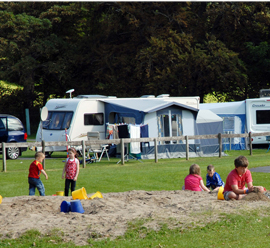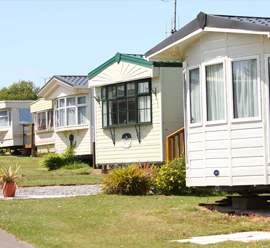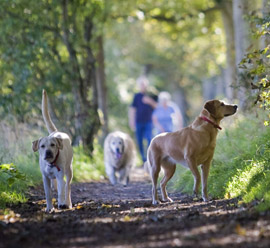Camp Sites in County Cavan
With its remarkable landscapes, rich culture and an array of watersports, County Cavan is one of Ireland’s Hidden Heartlands best-kept secrets. Experience the beauty of west Cavan with its clear water and rolling hills. Cavan is a county with a lake for every day of the year and is known as the Lakeland County.
Search More Camping Sites
Visit County Cavan
With its remarkable landscapes, rich culture and an array of watersports, County Cavan is one of Ireland’s Hidden Heartlands best-kept secrets. Experience the beauty of west Cavan with its clear water and rolling hills. Cavan is a county with a lake for every day of the year and is known as the Lakeland County.
Cavan is the source of many rivers. Shannon Pot on the slopes of Cuilcagh is the source of the River Shannon, the longest river in Ireland at 386 km (240 mi). The River Erne is a major river which rises from Beaghy Lough, two miles (3 km) south of Stradone in Cavan and flows for 120 km (75 mi) to Lough Erne.
Explore the ancient sites of the Breffni County. Turn back time on a trip to Cavan Burren Park, where you’ll find unique megalithic tombs and later, stop off at Cavan County Museum to learn about days gone by. Cavan is a central point between Dublin, Belfast, Donegal, Galway and Sligo.
Travelling to County Cavan
By Plane
Cavan is located approximately 100km from Dublin Airport and 140km from Belfast offering direct flights from over 100 destinations around Europe, the USA and Middle East. Ireland West Airport is also very accessible from Cavan.
By Boat
The main ports of entry are Cork, Dublin, Rosslare and Belfast. Dublin Port is approximately 120km from Cavan. Brittany Ferries operates a service between Cork-Roscoff (France). Rosslare Dublin and Larne ports offer daily services between Ireland-UK and services to France and Northern Spain. The following companies offer ferry services into Ireland – Stena Line, Irish Ferries, P&O Ferries, Kintyre Express, and Isle of Man Steam Packet
By Bus
Virigina and Cavan town are served by hourly buses from Dublin and Donegal. Cavan town is also serviced regularly from Belfast, Sligo and Galway. There is also daily service from Dublin Airport to Cavan Town. Check out Bus Eireann for more information.
Whats to See and Do in Cavan
Cavan Burren Park
Cavan Burren Park is one of Ireland’s most important prehistoric landscapes. Located in the Cuilcagh Lakelands Geopark, the park features megalithic tombs, ancient rock art, and glacial erratics. Follow one of the marked walking trails to discover the Giant’s Leap Wedge Tomb, the Calf House Dolmen, and panoramic views of west Cavan. With interpretive panels and a visitor centre, it’s the perfect place to explore Cavan’s ancient story.
Cavan County Museum
Located in a former convent, the award-winning Cavan County Museum in Ballyjamesduff brings the county’s history to life. Highlights include the World War I Trench Experience—the largest outdoor replica trench in Ireland and the UK—as well as exhibitions on the Great Famine, GAA, and rural life in 19th-century Cavan. It’s an excellent stop for families and history enthusiasts.
Cuilcagh Boardwalk Trail (Stairway to Heaven)
Walk the iconic Cuilcagh Boardwalk, also known as the “Stairway to Heaven,” which starts near the Cavan-Fermanagh border. This 7.5km route takes you across blanket bog and limestone terrain to the summit of Cuilcagh Mountain. The boardwalk protects the environment while offering breathtaking views over the surrounding lakelands and hills.
Killykeen Forest Park
Killykeen Forest Park is a lush haven for walkers, cyclists, and families. Set around Lough Oughter, this forested park has several looped trails and cycling routes, picnic spots, and great angling locations. Explore the peaceful woodland paths and catch a glimpse of Clough Oughter Castle, a ruined 13th-century Norman tower on an island in the lake.
Clough Oughter Castle
Accessible by kayak or boat, Clough Oughter Castle is a stunning, cylindrical ruined fortress that seems to float on the lake. Once a stronghold of the O’Reilly clan and later used as a prison, this atmospheric site offers a unique glimpse into medieval history in an unforgettable setting.
Erica’s Fairy Forest
Located in Cootehill, Erica’s Fairy Forest is a free outdoor space created in memory of young Erica Ní Draighneain. The forest features tiny fairy doors, wishing trees, and magical sculptures nestled among the trees. It’s a charming destination for families with children, inspiring imagination and gentle exploration.
Lough Oughter Canoe Trail
The interlinked lakes of Lough Oughter make for a perfect canoe or kayak adventure. Paddle through tranquil waters, spot herons and swans, and take in views of tree-covered islands and ancient ruins. The trail is suitable for all levels, and rental and guided tours are available nearby.
Cavan Special Offers
Causeway Campers – 15% off flash sale
Frequently Asked Questions about Camping in County Cavan
What types of camping are available in County Cavan?
County Cavan offers a variety of camping options, including traditional tent pitches, caravan and motorhome sites, and glamping pods in scenic countryside or lakeside locations.
Can I camp near the Cuilcagh Boardwalk or Stairway to Heaven?
Yes, there are several campsites and accommodation options within driving distance of the Cuilcagh Boardwalk Trail, also known as the Stairway to Heaven.
Are there lakeside campsites in Cavan?
Definitely. Known as the Lakeland County, Cavan features many campsites situated beside lakes, ideal for fishing, boating, or simply enjoying the views.
Is wild camping allowed in County Cavan?
Wild camping is not officially permitted in most places unless you have the landowner’s permission. It’s best to use designated campsites, especially near lakes or protected natural areas.
Can I bring my dog to campsites in Cavan?
Many campsites in Cavan are pet-friendly, especially those catering to families. However, always check individual site policies before you book.
Are campsites open year-round in Cavan?
Some campsites operate seasonally from spring to autumn, while a few may stay open year-round. It’s best to check in advance, especially if visiting in winter.






